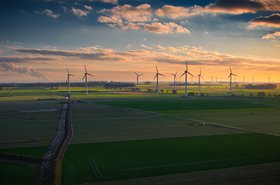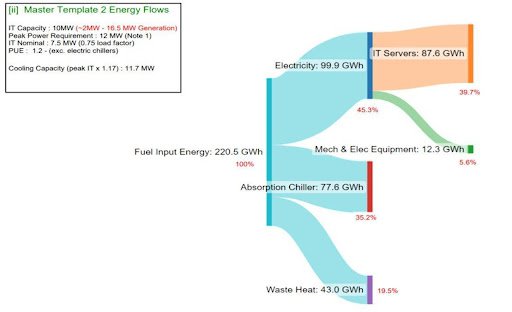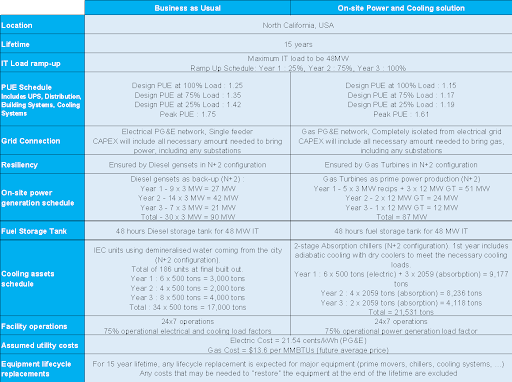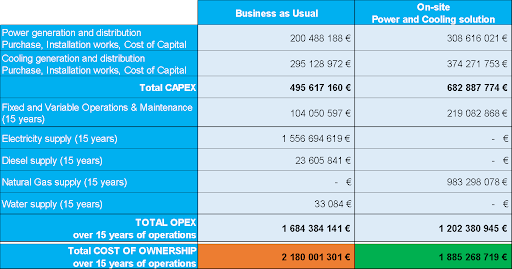With the climate crisis raging on, there is an urgent need to decarbonize the activity of our data centers. This is making the traditional scenario of connecting data centers to national electricity and water networks increasingly unsustainable.
As a result, we now need to look towards a new approach in designing and operating energy infrastructures for data centers, ranging from microgrids to campus scale utilities, that prioritize the use of decentralized and decarbonated generation.
This will help to guarantee the resilience of the utilities serving the data center and futureproof schemes that allow for the incorporation of zero-carbon generation, as new technologies and fuels come to market.
In previous articles in the series brought to you by Engie and RED, we’ve already looked at microgrids – local utility networks, incorporating thermal and electrical distribution, cabling, control, monitoring, and water services.
Not only will these new networks provide resilient and green services to the data center, but they will also be able to offer support to local networks and communities, providing waste heat, low-carbon, low-water cooling, and electricity to nearby consumers, as well as grid support services such as demand-side reduction and firm frequency response.
Focus on trigeneration
When it comes to lowering the environmental impact of a data center, overall energy and water efficiency are key topics to address. A way to make the microgrid operate at high efficiency is through the use of trigeneration as the primary energy supply.
Mix-fuel gas turbines provide the required power to the data center, with exhaust fumes at a temperature of around 600°C produced as a by-product. Steam can be supplied via waste heat boilers from the cogeneration sets to two-stage absorption chillers, which provide a highly resilient and highly efficient source of chilled water for data center cooling. In turn, this also drastically reduces the amount of water needed in the cooling process.
In the future, both gas engine and gas turbine generators will be able to accept an increasing blend of green fuels such as hydrogen, ammonia, and biogas, with the ultimate aim of running on 100 percent green fuels as supply chains develop.
In this respect, gas turbines are far more flexible in accepting different fuels and we believe that these will become the preferred choice for zero-carbon decentralized generation moving forward.
This new approach to waste energy has turned out to be far more efficient than traditional designs which use primary power from the electricity grid, backed up by additional on-site diesel generators, drastically reducing net energy losses to the whole supply chain.
Use case details and assumptions
Engie and RED have developed expertise in designing, financing, and operating such energy infrastructures across various industries. In terms of using such a solution as the primary source of energy for a data center, several projects are being developed with common core objectives :
- Providing guaranteed power and cooling
- Reducing data center capital costs for the customer, Engie financing the energy assets
- Reducing data center operating costs
- Increasing energy and water efficiency
- Future-proofing the energy infrastructure for the transition to net-zero carbon.
Here is an example of a first high-level Total Cost of Ownership (TCO) analysis that Engie and RED perform when undertaking a new project. Two use cases are compared:
- A ‘business as usual’ (BAU) refers to the traditional way to design the energy infrastructures of a data center given a certain location.
- An on-site power and cooling solution (microgrid approach), refers to a new way to design these energy infrastructures, using on-site generation for maximum energy efficiency and control of the energy transition roadmap over the lifetime of the data center.
In this simplified use case, the on-site power and cooling scenario comprises the installation and operation of a trigeneration system, with mix-fuel gas turbines running on natural gas, coupled with two-stage absorption chillers to produce chilled water by reusing the gas turbines’ waste heat.
If the gas turbines are only running on natural gas for that use case, the energy infrastructures are however already future-proofed by the ability to accept low-carbon or renewable fuels as the supply chain develops in the future. This analysis only tackles the TCO (CAPEX + OPEX over a 15 year lifespan.)
The power and cooling CAPEX are higher in the scenario suggested by Engie and RED. Indeed, gas turbines, reciprocating engines, and absorption chillers are premium equipment compared to traditional diesel backup and cooling systems. Engie has the ability to partly or fully invest in those energy assets so that customers can focus their finance on core business.
OPEX is where the payback happens. Thanks to the high energy efficiency of the trigeneration solution (around 80 percent of efficiency), the cooling process only needs a tiny amount of electricity to produce and distribute the chilled water, compared to a BAU scenario where the cooling process is either a high consumer of electricity or the less-power hungry water-based option, which still requires more electricity to run than a trigeneration solution.
Over the total lifetime of the facility (15 years), the on-site power and cooling solution proves less expensive than a BAU solution. The high availability of energy is guaranteed and remains on par with that of a traditional design, whilst the energy infrastructure is future-proofed for the transition to net-zero carbon.
Moreover, with national grids increasingly suffering a lack of capacity, outpacing rapid development in the data center industry, such an on-site solution is convenient in terms of tackling time-to-market challenges.
The study does not include additional revenues that could be generated by exporting the waste heat and cooling surplus, or by participating in grid services (ancillary or capacity services).
To take a deep dive into this topic, please contact Eric Lamendour, head of Green Data Centers at Engie. We would be happy to walk you through how our solutions can solve your own challenges.
More from Engie
-
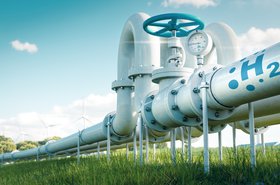
Sponsored Hydrogen-powered data centers: Utopian dream or next big thing?
How hydrogen and derivatives form a key strategic element of the carbon-neutrality solution
-

Sponsored How do data centers provide low-cost, zero-carbon energy to local communities?
An introduction to waste heat export in supporting local communities
-
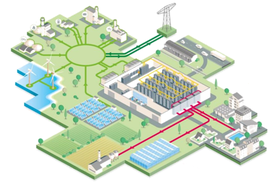
Sponsored Microgrids and data centers: How to increase high availability while achieving decarbonization objectives
The N+K microgrid can provide an effective alternative to the traditional N+1 or 2N resiliency. Here’s how it works
-
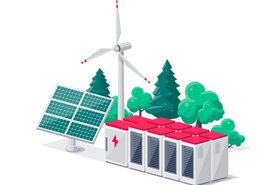
Sponsored How do microgrids support net-zero carbon data center objectives
How to match electricity consumption with carbon-free energy generation on an hourly basis, generate revenue and achieve high resiliency for your data center

